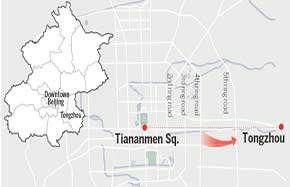Space exploration plans unveiled
The Chinese Academy of Sciences' National Space Science Center has officially unveiled five space exploration plans to be accomplished during the 13th Five Year Plan period (2016-20).
These include an Einstein Probe satellite that will carry two X-ray telescopes of differing sensitivities to search for black holes, gravitational waves, gamma-ray bursts and other phenomena; an Advanced Space-based Solar Observatory to study the relationships between solar magnetic fields, solar flares, and coronal mass ejections; a Water Cycle Observation Mission to improve scientists' understanding of the spatial and temporal distribution of the water cycle and related physical processes, as well as how the water cycle responds to global changes; the Magnetosphere-Ionosphere-Thermosphere Coupling Small Satellite Constellation Exploration Plan, comprised of four small satellites in different orbits that will traverse the polar regions at the same time but at different altitudes, in order to study the outflow of ions from the ionosphere to the magnetosphere; and the Solar Wind Magnetosphere Ionosphere Link Explorer, a joint project between the Chinese Academy of Sciences and European Space Agency to study the interaction between Earth's magnetosphere and the solar wind, while simultaneously monitoring the magnetosphere's plasma environment.
The National Space Science Center also began soliciting research ideas from all space science-related institutes across China on Thursday. Researchers have until the end of December to make a submission.
After the first round of expert review, the ideas with the best prospects will receive grants from the center for up to six months of in-depth study to draw up detailed research plans. Some of these could then be chosen as candidates for the country's 14th Five Year Plan (2021-25) or 15 Five Year Plan (2026-30) on space exploration.

























